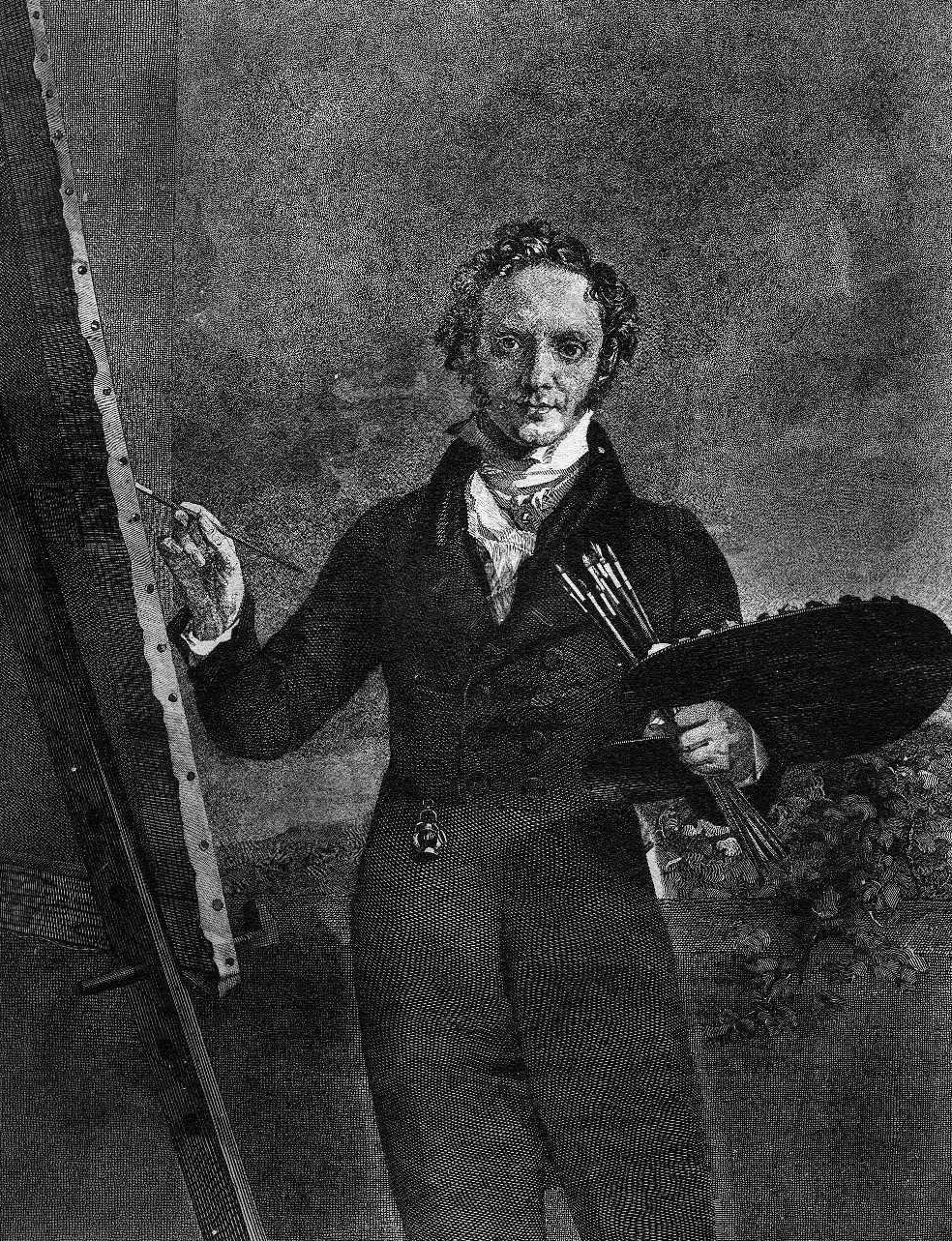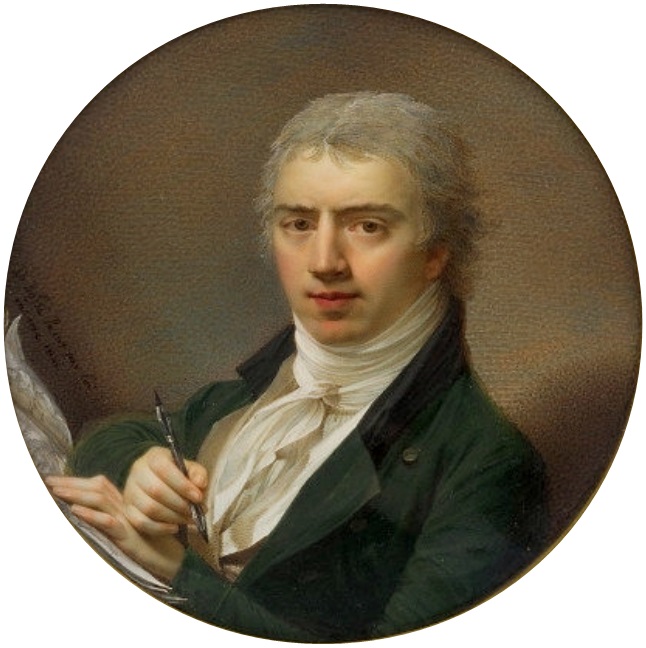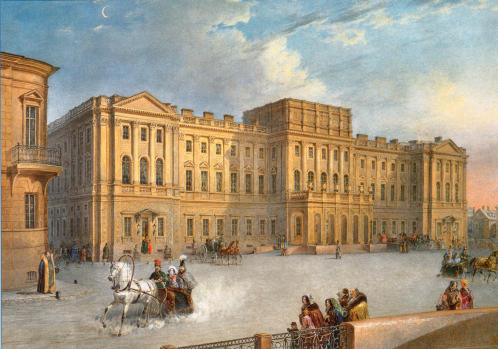|
Naryshkin Family
The House of Naryshkin (russian: Нарышкины) is a noble Moscow boyar family of Crimean Tatar descent, going back to a certain Mordko Kurbat Naryshko, a Crimean Tatar, who moved to Moscow in the 15th century.Sergei O. Prokofieff, ''The Spiritual Origins of Eastern Europe and the Future Mysteries of the Holy Grail'', Temple Lodge Publishing (1993), p. 460 It became allied to the ruling house in 1671 when the great beauty Natalya Naryshkina (daughter of Kirill Poluektovich Naryshkin) married Alexis of Russia, later becoming the mother of Peter the Great. The Naryshkin family was persecuted under the regency of Tsarevna Sophia Alekseyevna of Russia, but were then highly favoured by Peter and his descendants and played a major part in Russian life. Streltsy revolt against Naryshkin family During the Streltsy uprising, soldiers of the Streltsy staged a revolt against the Naryshkin family (the relatives of Peter’s mother, who had assumed actual power). Their uprising was cr ... [...More Info...] [...Related Items...] OR: [Wikipedia] [Google] [Baidu] |
Naryshkin Coat Of Arms (color) , a neoclassical palace in Saint Petersburg
{{surname, Naryshkin ...
Naryshkin (Russian: ) is a Russian masculine surname, and its feminine counterpart is Naryshkina. The name may refer to: * Members of the noble Naryshkin family, including: ** Kirill Naryshkin (1623–1691), Russian boyar and maternal grandfather of Peter the Great ** Natalya Naryshkina (1651–1694), Tsaritsa of Russia and mother of Peter the Great ** Aleksandr Naryshkin (1760–1826), Russian statesman ** Maria Naryshkina (1779–1854), mistress of Alexander I of Russia * Sergey Naryshkin (born 1954), Russian politician See also *Naryshkin Baroque, a style of Baroque architecture that was popular in Moscow *Naryshkin-Shuvalov Palace The Naryshkin-Shuvalov Palace (russian: Дворец Нарышкиных-Шуваловых), also known as the Shuvalov Palace, is a Neoclassical building on the Fontanka Embankment in Saint Petersburg, Russia. Once home to the noble Naryshki ... [...More Info...] [...Related Items...] OR: [Wikipedia] [Google] [Baidu] |
Alexander Lvovich Naryshkin
Alexander Lvovich Naryshkin (russian: Александр Лвович Нарышкин) (14 April 1760 - 21 January 1826) was a Russian noble of the Naryshkin family. He was the director of the Imperial Theatres from 1799 to 1819 and Marshal of Nobility of Saint-Petersburg from 1818 to 1826. He and his brother were famous for their lavish parties in Saint-Petersburg. Life Aleksandr Naryshkin was born on the 14th of April, 1760 into the Naryshkin family. After being tutored at home, he embarked on a Grand Tour, as was often done by upper-class young European men as a rite of passage. Upon his return, he entered the Izmailovsky Life Guards regiment, where he rose to the rank of lieutenant captain. In 1778, he was granted the position of chamber-junker and began building his career at the Imperial Court. In 1785, he was promoted to chamberlain and made friends with the heir to the throne, Catherine the Great's son Paul. After the accession to the throne of Paul I in 1797, he was a ... [...More Info...] [...Related Items...] OR: [Wikipedia] [Google] [Baidu] |
George Dawe
George Dawe (6 February 1781 – 15 October 1829) was an English portraitist who painted 329 portraits of Russian generals active during Napoleon's invasion of Russia for the Military Gallery of the Winter Palace. He relocated to Saint Petersburg in 1819, where he won acclaim for his work from the artistic establishment and complimentary verses by Pushkin. He was the son of Philip Dawe, a successful mezzotint engraver who also produced political cartoons relating to the events of the Boston Tea Party. One of his brothers was Henry Edward Dawe, also a portraitist. He died on 15 October 1829 in Kentish Town, United Kingdom. Life and career Early life and studies George Dawe was born on 6 February 1781 to Philip Dawe and Jane in Brewer Street, in the parish of St James's in Westminster. Philip was an artist and engraver in mezzotint who had worked with Hogarth and Joseph Mallord William Turner and who also produced satirical political cartoons about life in America which are ... [...More Info...] [...Related Items...] OR: [Wikipedia] [Google] [Baidu] |
Aleksandr Naryshkin
Alexander Lvovich Naryshkin (russian: Александр Лвович Нарышкин) (14 April 1760 - 21 January 1826) was a Russian noble of the Naryshkin family. He was the director of the Imperial Theatres from 1799 to 1819 and Marshal of Nobility of Saint-Petersburg from 1818 to 1826. He and his brother were famous for their lavish parties in Saint-Petersburg. Life Aleksandr Naryshkin was born on the 14th of April, 1760 into the Naryshkin family. After being tutored at home, he embarked on a Grand Tour, as was often done by upper-class young European men as a rite of passage. Upon his return, he entered the Izmailovsky Life Guards regiment, where he rose to the rank of lieutenant captain. In 1778, he was granted the position of chamber-junker and began building his career at the Imperial Court. In 1785, he was promoted to chamberlain and made friends with the heir to the throne, Catherine the Great's son Paul. After the accession to the throne of Paul I in 1797, he was a ... [...More Info...] [...Related Items...] OR: [Wikipedia] [Google] [Baidu] |
Domenico Bossi
Johann Dominik Bossi (1767–1853), also known as ''Domenico Bossi'', was an Italian painter. Bossi, a student of Giovanni Domenico Tiepolo, was born in Trieste and worked primarily as a miniaturist in Germany, Austria, Sweden and Russia before he settled down in Munich, where he lived at ''Theresien Straße 19'' in Munich around 1850. In Munich he was appointed a court painter A court painter was an artist who painted for the members of a royal or princely family, sometimes on a fixed salary and on an exclusive basis where the artist was not supposed to undertake other work. Painters were the most common, but the cour .... Bossi was the founder of a collection, which included a significant group of Tiepolo drawings amongst others. The collection passed to his daughter, Maria Theresa Caroline Bossi (1825–1881), and her husband, Carl Christian Friedrich Beyerlen (1826–1881). The ''Bossi-Beyerlen collection'' was sold at auction in Stuttgart and dispersed in March 1882. [...More Info...] [...Related Items...] OR: [Wikipedia] [Google] [Baidu] |
Alexander Alexeyevich Naryshkin
Alexander is a male given name. The most prominent bearer of the name is Alexander the Great, the king of the Ancient Greek kingdom of Macedonia who created one of the largest empires in ancient history. Variants listed here are Aleksandar, Aleksander and Aleksandr. Related names and diminutives include Iskandar, Alec, Alek, Alex, Alexandre, Aleks, Aleksa and Sander; feminine forms include Alexandra, Alexandria, and Sasha. Etymology The name ''Alexander'' originates from the (; 'defending men' or 'protector of men'). It is a compound of the verb (; 'to ward off, avert, defend') and the noun (, genitive: , ; meaning 'man'). It is an example of the widespread motif of Greek names expressing "battle-prowess", in this case the ability to withstand or push back an enemy battle line. The earliest attested form of the name, is the Mycenaean Greek feminine anthroponym , , (/Alexandra/), written in the Linear B syllabic script. Alaksandu, alternatively called ''Alakasandu'' or ... [...More Info...] [...Related Items...] OR: [Wikipedia] [Google] [Baidu] |
State Council (Russian Empire)
The State Council ( rus, Госуда́рственный сове́т, p=ɡəsʊˈdarstvʲɪn(ː)ɨj sɐˈvʲet) was the supreme state advisory body to the Tsar in Imperial Russia. From 1906, it was the upper house of the parliament under the Russian Constitution of 1906. 18th century Early Tsars' Councils were small and dealt primarily with external politics. Peter I of Russia introduced the Secret Council. Catherine I of Russia introduced the Supreme Secret Council. Its role varied during different reigns. Peter III of Russia created the Imperial Council on 20 May 1762 ("Императорский Совет"), or, formally "The Council at the Highest Court" ("Совет при высочайшем дворе"). It was dismissed shortly after the succession of Catherine II of Russia. 1810–1906 The State Council was established by Alexander I of Russia in 1810 as part of Speransky's reforms. Although envisaged by Speransky as the upper chamber of the Russian parliament, ... [...More Info...] [...Related Items...] OR: [Wikipedia] [Google] [Baidu] |
Kirill Alexandrovich Naryshkin
Kirill is a male given name, deriving from the Greek language, Greek name Κύριλλος (Kyrillos) which in turn derives from Greek κύριος (kyrios) "lord". There are many variant forms of the name: Cyril, Cyrill, Kyrill, Kiryl, Kirillos, Kyryl, Kiril, Kyrylo, Kiro. Kirill may refer to: People *Kirill I of Moscow (born 1946), Russian Patriarch of Moscow and all Russia *Kirill Vladimirovich, Grand Duke of Russia *Kirill Alekseenko (born 1997), Russian chess grandmaster *Kirill Aleshin (born 1997), Russian ice dancer *Kirill Alexeyev (born 1981), Russian ice hockey player *Kirill Bichutsky (born 1984), American photographer, businessman *Kirill Dmitriev (born 1975), Russian businessman *Kirill Eskov (born 1956), Russian writer *Kirill Florensky (1915–1982), Russian geochemist and planetologist *Kirill Formanchuk, Russian activist for motorists' rights *Kirill Gerasimov (born 1971), Russian poker player *Kirill Gerstein (born 1979), Russian pianist *Kirill Gevorgian (born ... [...More Info...] [...Related Items...] OR: [Wikipedia] [Google] [Baidu] |
Napoleonic Wars
The Napoleonic Wars (1803–1815) were a series of major global conflicts pitting the French Empire and its allies, led by Napoleon I, against a fluctuating array of European states formed into various coalitions. It produced a period of French domination over most of continental Europe. The wars stemmed from the unresolved disputes associated with the French Revolution and the French Revolutionary Wars consisting of the War of the First Coalition (1792–1797) and the War of the Second Coalition (1798–1802). The Napoleonic Wars are often described as five conflicts, each termed after the coalition that fought Napoleon: the Third Coalition (1803–1806), the Fourth (1806–1807), the Fifth (1809), the Sixth (1813–1814), and the Seventh (1815) plus the Peninsular War (1807–1814) and the French invasion of Russia (1812). Napoleon, upon ascending to First Consul of France in 1799, had inherited a republic in chaos; he subsequently created a state with stable financ ... [...More Info...] [...Related Items...] OR: [Wikipedia] [Google] [Baidu] |
Lev Naryshkin
Lev Alexandrovich Naryshkin (russian: Лев Александрович Нарышкин; also known as Léon Narychkine) (5 February 1785—1846, Naples) was a Russian Imperial aristocrat who fought in the Napoleonic Wars. Biography He was the son of Alexander Lvovich Naryshkin and his wife Maria Alexeyevna Senyavina, daughter of Admiral Alexei Senyavin. This made Lev brother to Elena Aleksandrovna Naryshkina and first cousin to Prince Mikhail Semyonovich Vorontsov, who fought in the Napoleonic Wars and the conquest of the Caucasus. Naryshkin was educated at home by private tutors under the French abbé Nicol. He entered the court as a page and became a chamberlain on 15 March 1799. He was made a lieutenant on 22 January 1803 in the Preobrazhensky regiment, then a cavalry captain on 13 February 1807 in the Hussar Regiment of the Imperial Guard. He fought at Gutstadt, Heilsberg and Friedland, where he was wounded in the arm and decorated with a gold sabre. He was demobilise ... [...More Info...] [...Related Items...] OR: [Wikipedia] [Google] [Baidu] |
Lev Kirillovich Naryshkin
Lev may refer to: Common uses * Bulgarian lev, the currency of Bulgaria *an abbreviation for Leviticus, the third book of the Hebrew Bible and the Torah People and fictional characters * Lev (given name) *Lev (surname) Places *Lev, Azerbaijan, a village * Lev (crater), a tiny lunar crater LEV *Laborious Extra-Orbital Vehicle, a mecha from the video game ''Zone of the Enders'' *Lay eucharistic visitor, an extraordinary minister of Holy Communion approved by a church (usually Episcopalian or Lutheran) to bring Communion to the homebound *Libreria Editrice Vaticana, the Vatican Publishing House *Light electric vehicle, an electric bicycle * Local exhaust ventilation, the process of "changing" or replacing air to improve indoor air quality *Low emission vehicle, a motor vehicle that emits relatively low levels of motor vehicle emissions *Lunar Excursion Vehicle, an early name for the Apollo Lunar Module *Longevity escape velocity, a hypothetical situation wherein the average huma ... [...More Info...] [...Related Items...] OR: [Wikipedia] [Google] [Baidu] |
Alexander I Of Russia
Alexander I (; – ) was Emperor of Russia from 1801, the first King of Congress Poland from 1815, and the Grand Duke of Finland from 1809 to his death. He was the eldest son of Emperor Paul I and Sophie Dorothea of Württemberg. The son of Grand Duke Paul Petrovich, later Paul I, Alexander succeeded to the throne after his father was murdered. He ruled Russia during the chaotic period of the Napoleonic Wars. As prince and during the early years of his reign, Alexander often used liberal rhetoric, but continued Russia's absolutist policies in practice. In the first years of his reign, he initiated some minor social reforms and (in 1803–04) major liberal educational reforms, such as building more universities. Alexander appointed Mikhail Speransky, the son of a village priest, as one of his closest advisors. The Collegia were abolished and replaced by the State Council, which was created to improve legislation. Plans were also made to set up a parliament and sign a constitu ... [...More Info...] [...Related Items...] OR: [Wikipedia] [Google] [Baidu] |
.jpg)


